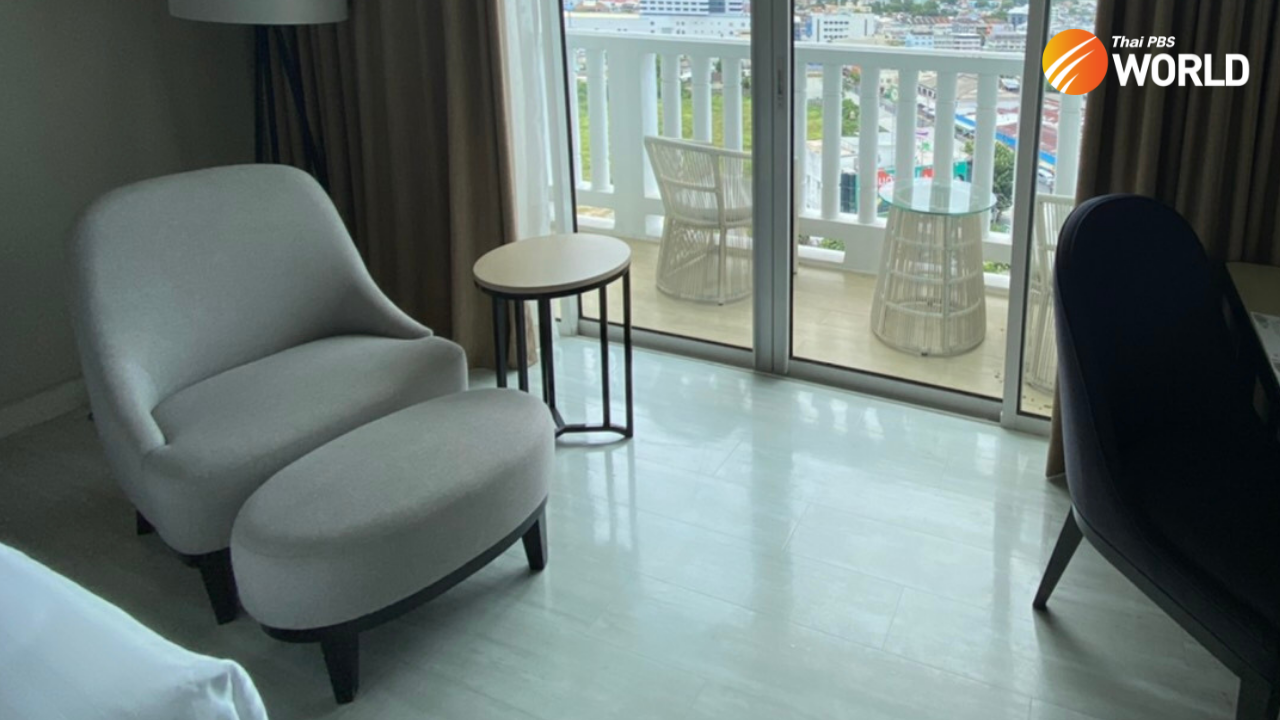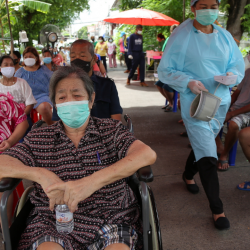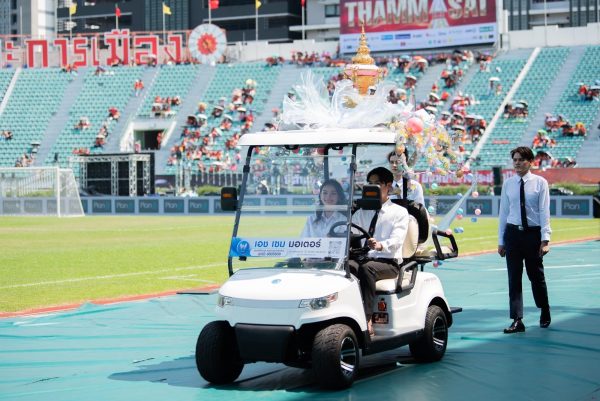A comprehensive guide to home and community isolation in Thailand

Most people who test positive for COVID-19 today will likely have to go into “home isolation” or “community isolation”, as Thailand’s public-health system is overwhelmed by new cases. The culprit is a fourth wave of infections that has been surging over the past two months.
Sunday (July 25) saw another grim high of 15,335 new COVID-19 infections and 129 deaths.
What is home isolation?
The Public Health Ministry has described it as a treatment program for COVID-19 patients with mild or no symptoms. Patients in the home-isolation system will get a thermometer, a pulse oximeter, three meals a day, a daily medical checkup, and counseling via telemedicine. Their medicines will be prescribed based on the judgment of doctors in charge of their case.
In the face of rising COVID-19 deaths, authorities have relaxed rules on prescribing the antiviral drug Favipiravir. The Medical Services Department (MSD) guidelines on treating COVID-19 were updated on July 21, allowing doctors to prescribe Favipiravir to patients without serious symptoms like inflamed lungs or other significant risks. In other words, those in home isolation may get Favipiravir too.
Home isolation officially lasts for 14 days. But after the period ends, patients are advised to isolate themselves for another 14 days to ensure they are completely free of the virus.
Who goes into home isolation?
Home isolation is designed for patients who are asymptomatic or have mild COVID-19 symptoms. Despite contracting the highly contagious virus, they are relatively healthy and younger than 60. For example, they must not have chronic kidney problems, heart or blood vessel diseases, or uncontrollable diabetes. They must also weigh less than 90 kilograms.
Moreover, their home should allow them to isolate from others. They should live alone or share a home with no more than one person.
However, given the seriousness of the COVID-19 outbreak in Thailand, home isolation now also applies to COVID-19 patients who are waiting for admission to hospitals or field hospitals. Some families have reported that all their members had caught COVID-19 after the first to have been infected was unable to self-isolate.
Home isolation rules
COVID-19 patients in home isolation must not leave their homes or receive visits from others. If there is more than one person under the same roof, they must always be at least 2 meters apart. The COVID-19 patient must not share meals or personal items with others. Windows should be left open for ventilation. Their clothes must be washed separately and if they share a bathroom with other family members, they should clean it after use.
Importantly, they must closely monitor their health including temperature, oxygen level, fever, and fatigue. If their symptoms worsen, they must immediately contact the medical facility in charge of their case for closer medical observation or referral.
The Dos and Don’ts when Doing a COVID Test at Home
Roche’s priority is to distribute the products nationwide as fast as possible. “However, we don’t encourage people to buy the tests and do them at home when they don’t need to,” he said. What d o I do if I test positive ? What if I get a negative result?
What is community isolation?
The Public Health Ministry has recommended the establishment of isolation facilities for communities where many residents have caught COVID-19. Community-isolation centers may be set up at a local school or temple, for example. Patients at the centers, just like those in home isolation, will be provided free meals and daily care via telemedicine.
Community-isolation centers must prepare proper sanitation systems and have channels to refer patients in case their conditions worsen. People from the same family may stay together at the centers.
To be eligible to stay at community isolation centers, COVID-positive individuals must have no or just minor symptoms.
Benefits of home/community isolation
The Public Health Ministry says the home/community isolation system – if implemented successfully – will ensure patients in serious need of treatments get life-saving help. Home-isolation trials previously conducted among a few hundred COVID-19 patients showed satisfactory results.
Statistics reveal that 76 percent of all COVID-19 patients in Thailand remain either asymptomatic or suffer only minor symptoms. They can recover with just basic medicines or care. Of the rest, about 20 percent develop worrying symptoms such as difficulty in breathing and inflamed lungs, while 4 percent suffer serious symptoms.
Many other countries are also using home isolation, including the United States and Denmark.
Home-isolation risks
Ideally, Thailand would not proceed with home isolation, said MSD director-general Dr. Somsak Akksilp, citing concerns that patients who look healthy at first might develop serious symptoms later and fail to get timely help. Also, home isolation risks spreading COVID-19 to other family members.
“But we need to do it now,” Somsak said on July 10.
Even though field hospitals and hospitels are now mushrooming, their combined capacity is still too low to accommodate all those who have tested positive for COVID-19. The number of medical workers, after all, is limited and cannot be increased overnight.
In recent days, the number of new infections per day has soared past 10,000.
With home isolation/community isolation systems, volunteers can step in to provide daily checkups, reports, give counseling based on guidelines, and coordinate with relevant authorities to refer serious cases for hospital treatment.
Registering for home/community isolation
Hospitals will generally recommend home isolation for patients under their care who qualify. Those who test positive elsewhere, including via antigen test kits, may contact a medical facility or clinic near their home, call the National Health Security Office’s (NHSO) 1330 hotline, or register on the NHSO website.
COVID-19 patients who have recovered may also be reassigned to home/community isolation after seven or 10 days at a hospital, hospitel, or field hospital.
Home/community isolation & insurance benefits
It remains unclear what insurance benefits COVID-19 patients in home isolation will be able to claim. While insurance firms have agreed to cover stays at newly-established hospitels, an informed source has revealed that insurers will categorize policyholders in home/community isolation as outpatients – meaning their expenses for medicines, chest X-rays and medical supplies will be covered.
However, they will probably not be able to claim room fees or income-protection benefits, the source said, as insurance firms point out that COVID-19 patients in home/community isolation would still be able to work.
Insurance firms will need to coordinate with the Office of Insurance Commission before clear guidelines can be issued.
By Thai PBS World’s General Desk






